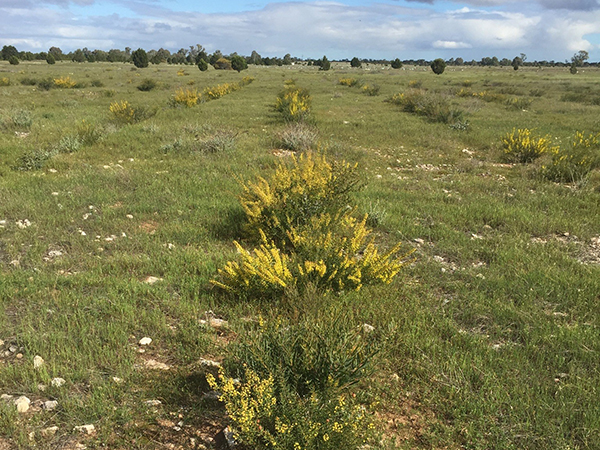Threated ecological communities set to thrive from wildlife sanctuary restoration

Landcare Australia’s direct seeding lines on Dakalanta Wildlife Sanctuary are thriving with a diverse mixture of local native flora.
A three-year project, revegetating 1190 hectares of cleared land, has come to completion at Dakalanta Wildlife Sanctuary on the Eyre Peninsula, South Australia.
The Dakalanta Revegetation Project is part of the Australian Government’s 20 Million Trees Program and has been delivered in partnership between Landcare Australia, Australian Wildlife Conservancy (AWC) and WildEyre, a consortium of regional natural resource management organisations.
Commencing in June 2015, the project involved 2380 kilometres of direct seeding, with over 50 locally-sourced native plant species, including drooping sheoak and mallee.
Previously farming land, the southern area of the sanctuary was severely degraded by fire and stock grazing, and incapable of regenerating naturally.
Based on Landcare Australia’s monitoring program, the project has generated exceptional results, delivering and exceeding the project’s targets with over 2 million trees, shrubs, and groundcovers established on the site.
Though small now, these seedlings will re-establish green corridors, providing habitat, dispersal, and food availability for regional and national threatened species.
They will also reduce Australia’s greenhouse gas emissions and reinstate ecological connectivity in this part of the Eyre Peninsula region.
Dakalanta Wildlife Sanctuary forms an important connectivity area as it is bounded to the north by Cocata Conservation Park, with adjacent areas nearby forming part of the WildEyre Biolink program.
It also protects a number of important species including a large population of southern hairy-nosed wombats, western pygmy possums, and little long-tailed dunnarts, and is home to over 118 species of birds, some of which are declining and are regionally significant.
According to Landcare Australia’s national 20 Million Trees program manager James Walsh, the large-scale restoration project has been delivered in accordance with best practice management and ecological standards.
“Our methods included deploying a science-based and landscape-scale approach to pest and weed management,” James said.
“We also successfully negotiated with local landholders within five kilometres of the project site to turn off all artificial watering points for two years after revegetation.”
This effective project management was essential to delivering the project, due to extremely tough and challenging conditions created by the area’s limestone calcrete soils.
Custom seeding units were designed to cope with the hard ground.
“An enormous effort has gone into Dakalanta – from all parties involved – and the great results speak for themselves,” Landcare Australia chief executive officer Dr Shane Norrish said.
“We are extremely pleased to be part of this significant project.
“The exceptional results could not have been achieved by us alone. It has taken partnership, collaboration, and working together towards a common goal, which is what Landcare is all about.”



